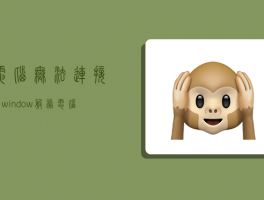选自TowardsDataScience
作者:Costas Andreou
机器之心编译
参与:Jamin、张倩
在读技术博客的过程中,我们会发现那些能够把知识、成果讲透的博主很多都会做动态图表。他们的图是怎么做的?难度大吗?这篇文章就介绍了 Python 中一种简单的动态图表制作方法。
数据暴增的年代,数据科学家、分析师在被要求对数据有更深的理解与分析的同时,还需要将结果有效地传递给他人。如何让目标听众更直观地理解?当然是将数据可视化啊,而且最好是动态可视化。
本文将以线型图、条形图和饼图为例,系统地讲解如何让你的数据图表动起来
。
这些动态图表是用什么做的?
接触过数据可视化的同学应该对 Python 里的 Matplotlib 库并不陌生。它是一个基于 Python 的开源数据绘图包,仅需几行代码就可以帮助开发者生成直方图、功率谱、条形图、散点图等。这个库里有个非常实用的扩展包——FuncAnimation,可以让我们的静态图表动起来。
FuncAnimation 是 Matplotlib 库中 Animation 类的一部分,后续会展示多个示例。如果是首次接触,你可以将这个函数简单地理解为一个 While 循环,不停地在 “画布” 上重新绘制目标数据图。
如何使用 FuncAnimation?
这个过程始于以下两行代码:
import?matplotlib.animation?as?anianimator?=?ani.FuncAnimation(fig,?chartfunc,?interval?=?100)
从中我们可以看到 FuncAnimation 的几个输入:
fig 是用来 「绘制图表」的 figure 对象;
chartfunc 是一个以数字为输入的函数,其含义为时间序列上的时间;
interval 这个更好理解,是帧之间的间隔延迟,以毫秒为单位,默认值为 200。
这是三个关键输入,当然还有更多可选输入,感兴趣的读者可查看原文档,这里不再赘述。
下一步要做的就是将数据图表参数化,从而转换为一个函数,然后将该函数时间序列中的点作为输入,设置完成后就可以正式开始了。
在开始之前依旧需要确认你是否对基本的数据可视化有所了解。也就是说,我们先要将数据进行可视化处理,再进行动态处理。
按照以下代码进行基本调用。另外,这里将采用大型流行病的传播数据作为案例数据(包括每天的死亡人数)。
import?matplotlib.animation?as?aniimport?matplotlib.pyplot?as?pltimport?numpy?as?npimport?pandas?as?pdurl?=?\’https://raw.githubusercontent.com/CSSEGISandData/COVID-19/master/csse_covid_19_data/csse_covid_19_time_series/time_series_covid19_deaths_global.csv\’df?=?pd.read_csv(url,?delimiter=\’,\’,?header=\’infer\’)df_interest?=?df.loc[????df[\’Country/Region\’].isin([\’United?Kingdom\’,?\’US\’,?\’Italy\’,?\’Germany\’])????&?df[\’Province/State\’].isna()]df_interest.rename(????index=lambda?x:?df_interest.at[x,?\’Country/Region\’],?inplace=True)df1?=?df_interest.transpose()df1?=?df1.drop([\’Province/State\’,?\’Country/Region\’,?\’Lat\’,?\’Long\’])df1?=?df1.loc[(df1?!=?0).any(1)]df1.index?=?pd.to_datetime(df1.index)
绘制三种常见动态图表
动态线型图
如下所示,首先需要做的第一件事是定义图的各项,这些基础项设定之后就会保持不变。它们包括:创建 figure 对象,x 标和 y 标,设置线条颜色和 figure 边距等:
import?numpy?as?npimport?matplotlib.pyplot?as?pltcolor?=?[\’red\’,?\’green\’,?\’blue\’,?\’orange\’]fig?=?plt.figure()plt.xticks(rotation=45,?ha=\”right\”,?rotation_mode=\”anchor\”)?#rotate?the?x-axis?valuesplt.subplots_adjust(bottom?=?0.2,?top?=?0.9)?#ensuring?the?dates?(on?the?x-axis)?fit?in?the?screenplt.ylabel(\’No?of?Deaths\’)plt.xlabel(\’Dates\’)
接下来设置 curve 函数,进而使用 .FuncAnimation 让它动起来:
def?buildmebarchart(i=int):????plt.legend(df1.columns)????p?=?plt.plot(df1[:i].index,?df1[:i].values)?#note?it?only?returns?the?dataset,?up?to?the?point?i????for?i?in?range(0,4):????????p[i].set_color(color[i])?#set?the?colour?of?each?curveimport?matplotlib.animation?as?anianimator?=?ani.FuncAnimation(fig,?buildmebarchart,?interval?=?100)plt.show()
动态饼状图
可以观察到,其代码结构看起来与线型图并无太大差异,但依旧有细小的差别。
import?numpy?as?npimport?matplotlib.pyplot?as?pltfig,ax?=?plt.subplots()explode=[0.01,0.01,0.01,0.01]?#pop?out?each?slice?from?the?piedef?getmepie(i):????def?absolute_value(val):?#turn?%?back?to?a?number????????a??=?np.round(val/100.*df1.head(i).max().sum(),?0)????????return?int(a)????ax.clear()????plot?=?df1.head(i).max().plot.pie(y=df1.columns,autopct=absolute_value,?label=\’\’,explode?=?explode,?shadow?=?True)????plot.set_title(\’Total?Number?of?Deaths\\n\’?+?str(df1.index[min(?i,?len(df1.index)-1?)].strftime(\’%y-%m-%d\’)),?fontsize=12)import?matplotlib.animation?as?anianimator?=?ani.FuncAnimation(fig,?getmepie,?interval?=?200)plt.show()
主要区别在于,动态饼状图的代码每次循环都会返回一组数值,但在线型图中返回的是我们所在点之前的整个时间序列。返回时间序列通过 df1.head(i) 来实现,而. max()则保证了我们仅获得最新的数据,因为流行病导致死亡的总数只有两种变化:维持现有数量或持续上升。
df1.head(i).max()
动态条形图
创建动态条形图的难度与上述两个案例并无太大差别。在这个案例中,作者定义了水平和垂直两种条形图,读者可以根据自己的实际需求来选择图表类型并定义变量栏。
fig?=?plt.figure()bar?=?\’\’def?buildmebarchart(i=int):????iv?=?min(i,?len(df1.index)-1)?#the?loop?iterates?an?extra?one?time,?which?causes?the?dataframes?to?go?out?of?bounds.?This?was?the?easiest?(most?lazy)?way?to?solve?this?:)????objects?=?df1.max().index????y_pos?=?np.arange(len(objects))????performance?=?df1.iloc[[iv]].values.tolist()[0]????if?bar?==?\’vertical\’:????????plt.bar(y_pos,?performance,?align=\’center\’,?color=[\’red\’,?\’green\’,?\’blue\’,?\’orange\’])????????plt.xticks(y_pos,?objects)????????plt.ylabel(\’Deaths\’)????????plt.xlabel(\’Countries\’)????????plt.title(\’Deaths?per?Country?\\n\’?+?str(df1.index[iv].strftime(\’%y-%m-%d\’)))????else:????????plt.barh(y_pos,?performance,?align=\’center\’,?color=[\’red\’,?\’green\’,?\’blue\’,?\’orange\’])????????plt.yticks(y_pos,?objects)????????plt.xlabel(\’Deaths\’)????????plt.ylabel(\’Countries\’)animator?=?ani.FuncAnimation(fig,?buildmebarchart,?interval=100)plt.show()
在制作完成后,存储这些动态图就非常简单了,可直接使用以下代码:
animator.save(r\’C:\\temp\\myfirstAnimation.gif\’)
感兴趣的读者如想获得详细信息可参考:?
https://matplotlib.org/3.1.1/api/animation_api.html
原文链接:
https://towardsdatascience.com/learn-how-to-create-animated-graphs-in-python-fce780421afe
———End
———
顺便给大家推荐下我的微信视频号「价值前瞻」,主要分享读书、成长和投资思考,可以了解不一样的我,欢迎扫码关注。88683543
《怎么制作动态数据表,python 画 动态》来自互联网同行内容,若有侵权,请联系我们删除!






还没有评论,来说两句吧...